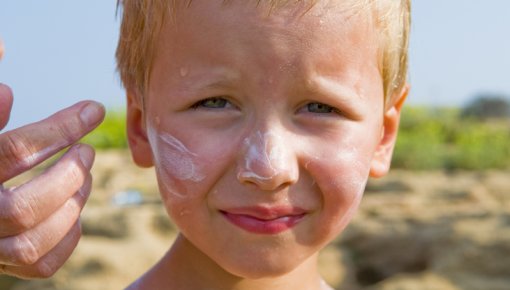Arbeitsgemeinschaft der Wissenschaftlichen Medizinischen Fachgesellschaften (AWMF), Deutsche Krebsgesellschaft (DKG), Deutsche Krebshilfe (DKH). S3-Leitlinie Prävention von Hautkrebs. AWMF-Registernr.: 032-052OL. 2021.
Bath-Hextall F, Perkins W. Basal cell carcinoma. In: Williams H, Bigby M, Herxheimer A et al (Ed). Edvidence-based dermatology. London: BMJ Books; 2014. P. 250-263.
Bath-Hextall FJ, Leonardi-Bee J, Somchand N et al. Interventions for preventing non-melanoma skin cancers in high-risk groups. Cochrane Database Syst Rev 2007; (4): CD005414.
Bauer A, Diepgen TL, Schmitt J. Is occupational solar ultraviolet irradiation a relevant risk factor for basal cell carcinoma? A systematic review and meta-analysis of the epidemiological literature. Br J Dermatol 2011; 165(3): 612-625.
Baxter JM, Patel AN, Varma S. Facial basal cell carcinoma. BMJ 2012; 345: e5342.
Bundesamt für Strahlenschutz (BfS). Optical radiation: Legal regulations for sunbeds. 2022.
Cancer Council Australia, Australia Cancer Network. Clinical Practice Guide. Basal cell carcinoma, squamous cell carcinoma (and related lesions) – a guide to clinical management in Australia. Sydney: Cancer Council Australia, Australian Cancer Network; 2008.
Deutsche Krebsgesellschaft (DKG), Deutsche Krebshilfe (DKH), Arbeitsgemeinschaft der Wissenschaftlichen Medizinischen Fachgesellschaften (AWMF). Aktinische Keratose und Plattenepithelkarzinom der Haut (S3-Leitlinie). AWMF-Registernr: 032-022OL. 2020.
Flohil SC, van der Leest RJ, Arends LR et al. Risk of subsequent cutaneous malignancy in patients with prior keratinocyte carcinoma: a systematic review and meta-analysis. Eur J Cancer 2013; 49(10): 2365-2375.
Garside R, Pearson M, Moxham T. What influences the uptake of information to prevent skin cancer? A systematic review and synthesis of qualitative research. Health Educ Res 2010; 25(1): 162-182.
International Agency for Research on Cancer Working Group on artificial ultraviolet (UV) light and skin cancer (IARC). The association of use of sunbeds with cutaneous malignant melanoma and other skin cancers: A systematic review. Int J Cancer 2007; 120(5): 1116-1122.
Janda M, Green A. Primary prevention of skin cancer. In: Williams H, Bigby M, Herxheimer A, Naldi L, Rzany B, Dellavalle R et al. (Ed). Edvidence-based dermatology. London: BMJ Books; 2014. P. 223-230.
Lansbury L, Perkins W, F. B-H. Treatment of squamous cell carcinoma. In: Williams H, Bigby M, Herxheimer A, Naldi L, Rzany B, Dellavalle R et al. (Ed). Edvidence-based dermatology. London: BMJ Books; 2014. P. 241-249.
Lautenschlager S, Wulf HC, Pittelkow MR. Photoprotection. Lancet 2007; 370(9586): 528-537.
Leonardi-Bee J, Ellison T, Bath-Hextall F. Smoking and the risk of nonmelanoma skin cancer: systematic review and meta-analysis. Arch Dermatol 2012; 148(8): 939-946.
Lin JS, Eder M, Weinmann S. Behavioral counseling to prevent skin cancer: a systematic review for the U.S. Preventive Services Task Force. Ann Intern Med 2011; 154(3): 190-201.
Lorenc T, Jamal F, Cooper C. Resource provision and environmental change for the prevention of skin cancer: systematic review of qualitative evidence from high-income countries. Health Promot Int 2013; 28(3): 345-356.
National Institute for Health and Clinical Excellence (NICE). Improving outcomes for people with skin tumours including melanoma (Cancer service guidelines; No. 8). 2010.
National Institute for Health and Clinical Excellence (NICE). Skin cancer prevention (Public Health Guidelines; No. 32). 2016.
Rubin AI, Chen EH, Ratner D. Basal-cell carcinoma. N Engl J Med 2005; 353(21): 2262-2269.
Schmitt J, Seidler A, Diepgen TL et al. Occupational ultraviolet light exposure increases the risk for the development of cutaneous squamous cell carcinoma: a systematic review and meta-analysis. Br J Dermatol 2011; 164(2): 291-307.
Thompson AK, Kelley BF, Prokop LJ et al. Risk Factors for Cutaneous Squamous Cell Carcinoma Recurrence, Metastasis, and Disease-Specific Death: A Systematic Review and Meta-analysis. JAMA Dermatol 2016; 152(4): 419-428.
Wehner MR, Shive ML, Chren MM et al. Indoor tanning and non-melanoma skin cancer: systematic review and meta-analysis. BMJ 2012; 345: e5909.
World Health Organization (WHO). Global solar UV index. A Practical Guide. 2002.
IQWiG health information is written with the aim of helping people understand the advantages and disadvantages of the main treatment options and health care services.
Because IQWiG is a German institute, some of the information provided here is specific to the German health care system. The suitability of any of the described options in an individual case can be determined by talking to a doctor. informedhealth.org can provide support for talks with doctors and other medical professionals, but cannot replace them. We do not offer individual consultations.
Our information is based on the results of good-quality studies. It is written by a team of health care professionals, scientists and editors, and reviewed by external experts. You can find a detailed description of how our health information is produced and updated in our methods.


